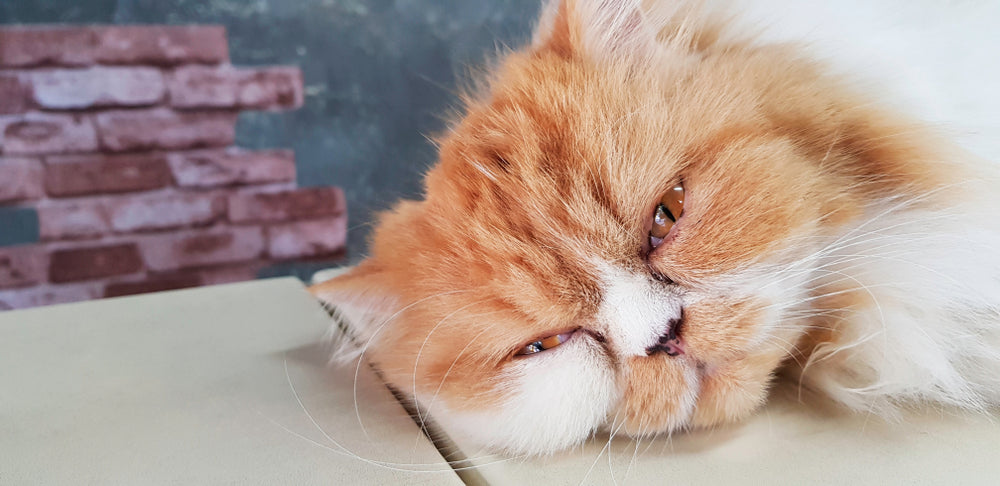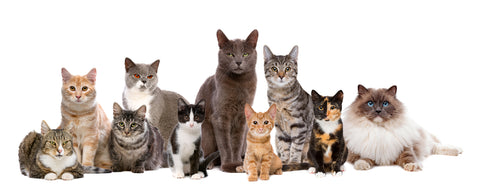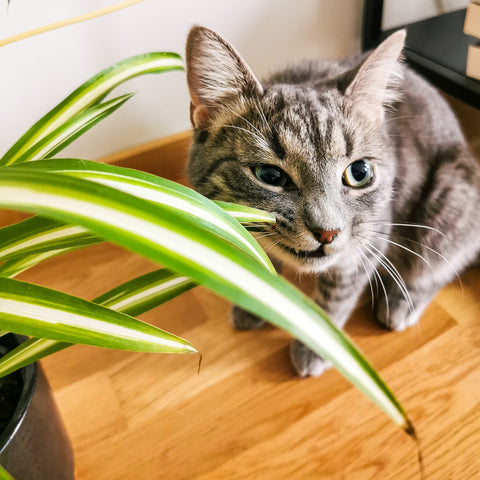
Feline distemper, also known as feline panleukopenia (FP), is a viral disease that is caused by the feline parvovirus. This highly contagious disease is also referred to as feline parvo; however, parvo in cats is caused by a completely different virus than the parvo in dogs (also called canine distemper). Continue reading to learn more about distemper in cats, common causes and symptoms of feline distemper, and how it is diagnosed and treated by veterinarians.
What Is Distemper In Cats?
Feline distemper (feline panleukopenia) affects cells in your cat’s body that grow and divide very quickly. These types of cells can be found in many places, including bone marrow, the intestinal tract, skin, and the stem cells of a developing fetus. Also called feline parvo, this disease can cause a lot of challenges to an infected cat's health.
According to PetMD, the feline parvovirus that causes distemper suppresses the production of white blood cells in the bone marrow. This weakens your cat’s immune system, making it a struggle to fight off infections and increasing their susceptibility to other invading viruses. The ability of feline parvovirus to compromise the immune system can lead to secondary bacterial infections and even anemia in cats.
How Do Cats Get Distemper?
Feline distemper (feline panleukopenia) is everywhere, throughout the United States and across the globe. Your cat can become exposed when they come into contact with other cats’ bodily fluids, such as saliva, urine, and nasal discharge, but the most common exposure is through contact with feces. It is important to note that once the virus spreads in the environment, it can live for years as the feline parvovirus that causes distemper is very robust. This is another reason why this virus is so contagious.
The virus is commonly found in an infected cat’s bedding, food, water bowls, on their paws, in their litter boxes, and even hitch a ride from the outside on the bottom of our own shoes if we bring them into the home. It can be picked up quickly by a cat—whether through direct contact with an infected cat, or indirectly from the environment. Feline parvovirus can withstand cold temperatures and is even resistant to iodine and alcohol.
Kittens and unvaccinated cats are at the highest risk for contracting feline distemper (feline panleukopenia), which can be deadly if not diagnosed by a veterinarian and treated early. Unfortunately, feline distemper is considered the most fatal cat disease in unvaccinated cats. Cats with decreased immune systems, kittens, and pregnant cats are also at higher risk of developing more complicated symptoms associated with distemper.
Common Distemper Symptoms In Cats

The most common symptoms of feline distemper (feline panleukopenia) include:
- Excessive sneezing
- Runny nose
- Discharge from eyes
- Fever
- Dehydration
- Loss of balance
- Difficulty walking
- Sudden onset of diarrhea
- Painful abdomen
- Vomiting
- Refusal to eat
- Lethargy
- Depression
- Reduced white blood cell count
- Pale gums (sign of anemia)
Is Distemper In Cats Curable?
Currently, there is no way to completely cure feline distemper (feline panleukopenia). This is why early vaccination is very important to prevent your cat from getting distemper in the first place. However, an infected cat can survive and develop lifelong immunity if treated very early in the initial stages of infection and they also respond well to veterinarian-prescribed therapies. However, it’s important to keep in mind that a good prognosis decreases for cats with underlying conditions, such as:
- Low protein levels
- Low temperature
- Thin body conditions
- Very low white blood cells
Distemper in cats can also lead to secondary issues. For example, if a cat’s intestinal tract is infected, they can become severely dehydrated from resulting diarrhea, decreased appetite, and vomiting. Severe dehydration can cause the safety barrier between the intestines and body to deteriorate, leaving the cat susceptible to secondary bacterial infections and other complications that can be fatal. This is why early diagnosis and treatment is critical to supporting a cat with feline distemper.
Distemper In Cats: Diagnosis And Treatment
Your veterinarian will conduct a thorough exam, which will likely include a blood panel and other lab work. However, there is no one-size-fits-all approach to treating an infected cat. Most cats, especially if they are severely dehydrated, will most likely have to stay in a veterinary hospital for monitoring and care during the critical early stages of infection.
Home Care
Home care will consist of ongoing support for your beloved furry baby as recommended by your veterinarian. You may be sent home with prescribed medications, and it is important to keep both you and your cat safe by following the instructions closely. Also remember that your cat has to be quarantined from the other animals in your home. Always protect yourself and other pets by washing your hands and taking other precautionary measures as indicated by your vet.

Recovery And Management
Rest should be one of your main focuses while your furry friend is recovering. Their body has been fighting a good battle against feline distemper (feline panleukopenia) and needs time to replenish. Make sure they have a comfortable place to rest, eat well, and drink plenty of fluids. Remember that the virus can remain on surfaces or objects for a long time. So, if any food bowls, rest beds, or similar items came into contact with a cat infected with distemper, it may be best to discard and replace those items once they have recovered. Otherwise, you can try to thoroughly disinfect the items with products recommended by your veterinarian. Washing your hands is always recommended before and after you interact with your kitty to avoid spreading the virus. Don’t forget to be extra attentive to your cat during their time of recovery, but also keep them in a safe and quiet place away from things that may overly stimulate, such as children or other pets, during their recovery period.
How To Prevent Distemper In Your Cat
The American Animal Hospital Association (AAHA) recommends the vaccine for feline distemper (feline panleukopenia/FPV), as part of the core vaccines for cats. Consult your vet to discuss a vaccination plan, especially if you are unsure of your cat’s vaccination history.

Even if your cat has been vaccinated against feline distemper (feline panleukopenia), it is important to avoid exposure to animals suspected of infection. As mentioned, make sure that the environment in which they sleep and play gets cleaned regularly and that they are separated from any other exposed pets in your home. If you have to interact with an infected animal such as another cat in your home, be sure to wear protective disposable medical gloves and wash your hands after every interaction.
Conclusion
Feline distemper feline distemper (feline panleukopenia) is highly contagious and can be life-threatening, but you can help protect your cat from this disease by ensuring that they are fully vaccinated and by staying up to date on all vaccinations. Be sure to schedule regular wellness checkups with your veterinarian and, if you ever notice signs of distemper in your cat, call your vet immediately. Learn more about viruses in general, including other common viruses in cats, so that you can stay on top of your cat’s health and cuddle with them for many years to come.
Get Ahead Of Other Health Issues With Basepaws
When it comes to other aspects of your cat's health, the Basepaws Breed + Health Cat DNA Test and Oral Health Test for Cats offer you the knowledge and insight you need to know your cat better, both inside and out. Learn about 25 genetic traits connected to your kitty’s unique appearance, and potentially life-saving information about their blood type and likelihood of resistance to the Feline Immunodeficiency Virus (FIV).
Basepaws Cat DNA Test screens your kitty for their risk of developing 43 genetic diseases, and tests your cat's mouth for signs of periodontal disease, halitosis, and tooth resorption. Dental issues are painful and difficult to see with the naked eye, and poor oral health puts your feline friend at risk for heart, kidney, and other conditions. By knowing your cat’s risk for common diseases, and how their oral health connects to their overall health, you can be proactive and support their well-being to help them live a better life, even longer!



